'The electric shock that transformed my life'
- Published
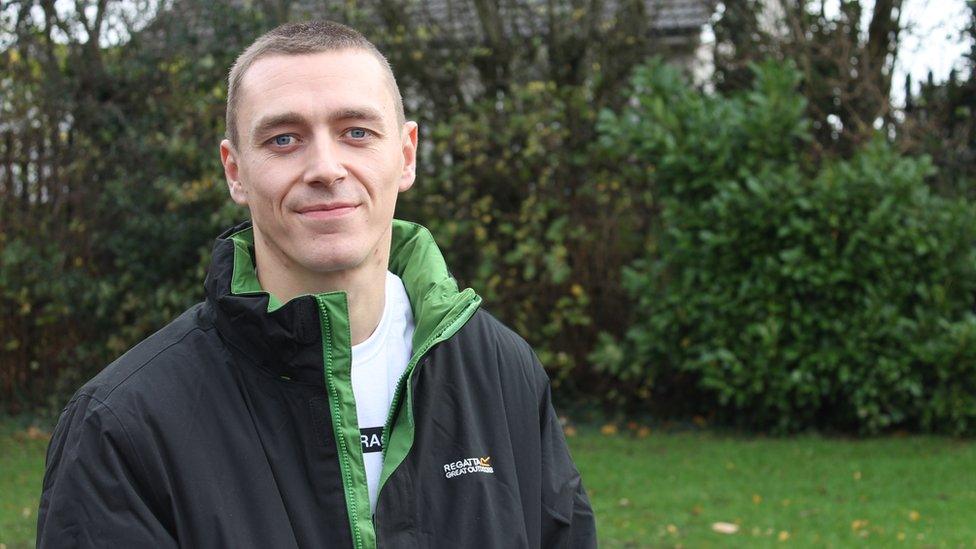
Tom Crosby received a 25,000-volt electric shock while trespassing on a railway line. The experience and the horrifying injuries he suffered changed his life forever.
It was 16 October 2001 and I was 14 years old. As kids, we used to go over to the train tracks quite frequently to play - we used to climb through a gap in the fence on a nearby estate.
Sometimes we actually used to jump on the moving freight trains, hanging on to the back of the carriages and then jumping off again further up the track.
On this particular day, we were playing a game of tag or manhunt or whatever you want to call it. I was running along the top of a train, and then I slipped.
My natural instinct was to grab the first thing that came to hand - and that happened to be the overhead wire. It blew me clean off the train and I landed on my head in the gravel.
I had just received an electric shock of 25,000 volts
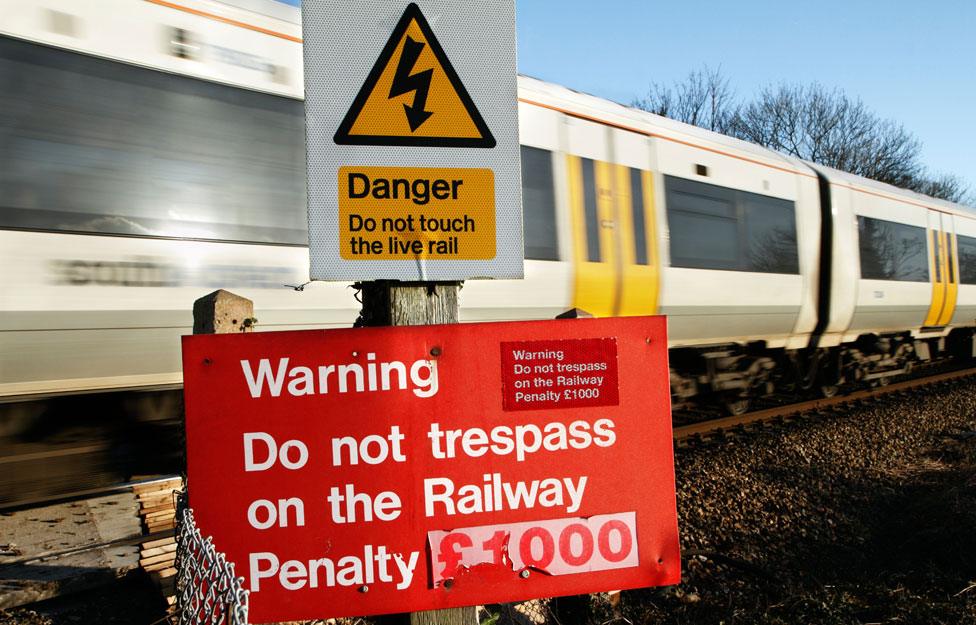
The feeling you get when you have a shock like that is like a burning sensation all over your body. And it just doesn't stop.
The electricity entered the right side of my body and came out of my right foot. If it had gone through the left side of my body it would have struck my heart and stopped it beating.
You could see the exit wound - it was a perfect circle as if someone had drawn around a two-pence piece on the sole of my foot.
The tracksuit bottoms I had on had burnt to my legs, my jacket had disintegrated and my t-shirt was full of burn holes. The shoes I had on helped save my life, because they had thick rubber soles - and that was all that was left of them, the rest had been burnt away.
After I hit the floor I was unconscious, but then my friends said I got up and tried to run away out of shock. Apparently this is quite common.

Find out more
Son ‘scarred for life’ after railway line electrocution
Siobhan Hubbard's son Thomas also received an electric shock on a railway line while trespassing. He, too, suffered horrendous injuries.
Siobhan and Tom were speaking to BBC 5 live Breakfast. Listen from 06:00 GMT on 3 December or listen again on iPlayer

My friends stopped me from running and laid me down and one put his jacket under my head. Then they got the nearest signal man to call for help, this was of course before mobile phones.
I remember very little about the hours and days afterwards.
I sort of remember being in the ambulance and asking if I could go to sleep. I remember coming around and seeing one of my brothers in my hospital room in all the surgeon's gear, like he was going to operate himself. I went into a coma for four days because of the pain I was in - it was just too much pain.
The next time I woke up was on the Friday morning, that's after being shocked on the Tuesday - so I'd been out for three days. When I came round, I was asking: "What's going on?" That's when the doctors and nurses were brought around me and explained what had happened.
I was burnt from head to toe and had been bandaged head to toe. I looked like a mummy.
My main worry was that I'd never be a normal boy again, I thought that my face would be scarred and that life wouldn't be the same.
I remember being in the hospital for bonfire night and thinking I'd never be able to play out, because people wouldn't want to know me because of the way I look.
After two weeks I was finally able to get up and go to the toilet by myself, but the nurses and my parents didn't realise there was a mirror in the bathroom.
It was the first time that I'd been able to see my face and I'll never forget that moment.
As soon as I saw my face I started crying, screaming. I was unrecognisable.
There was no skin on my face at all, it was like I'd been peeled and turned inside out. It was red raw, with veins popping out.
My head had swollen up like a balloon, it looked like my skeleton was showing through - something you'd see a child wearing as a Halloween mask. Everyone came running in. My mum and the nurses sat me down and reassured me, but my face was the size of a football.
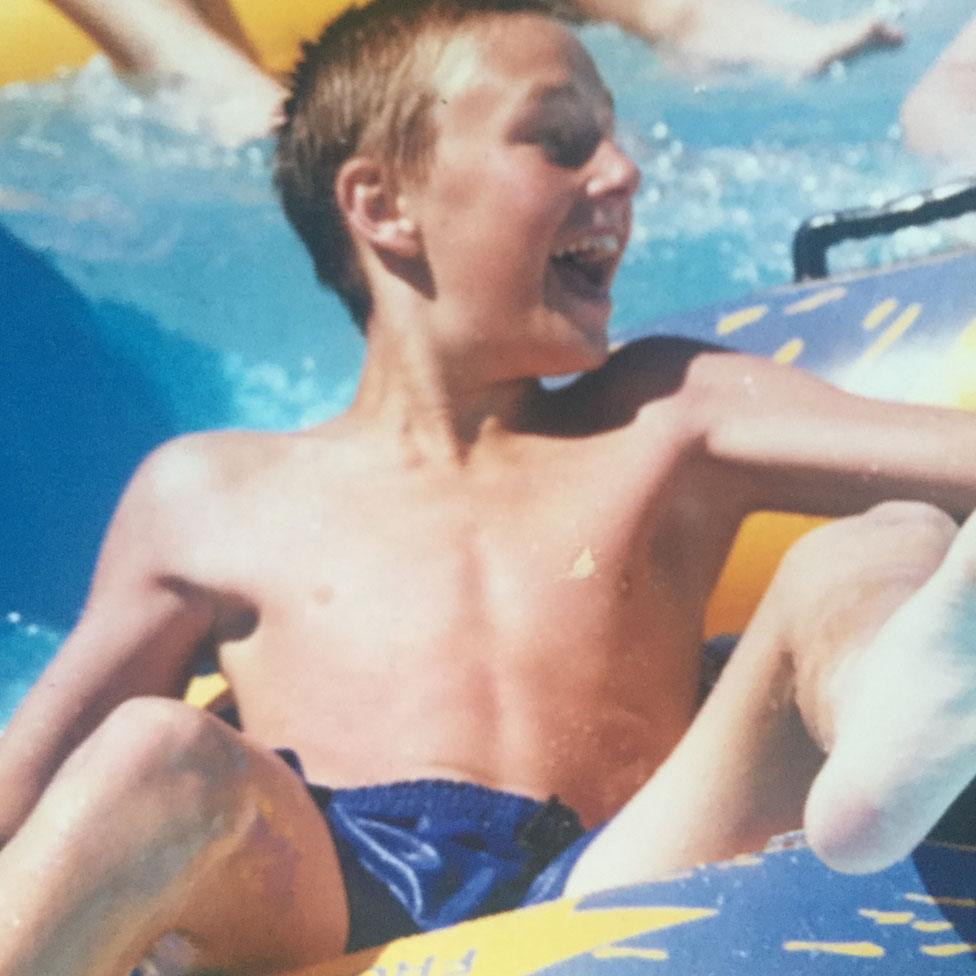
Tom before the accident
While I was laying in the hospital bed, my main feelings were just of sadness, not knowing how I got there or how my life was going to turn out afterwards.
The people who were affected the most were my family. On the first night I was taken into hospital, the doctors told my mum that there was only a 25% chance I'd make it through the night. For a mum to hear that must have been awful.
They said the first night was crucial and to prepare for the worst. My mum was there every day for the whole eight weeks.
I ended up having 14 skin grafts, all down the right hand side of my body. When I left hospital, I still had to go back every day to change the bandages.
My bed was brought down into our living room, because I couldn't make it up the stairs. The bottoms of my feet were burnt, so walking was really difficult.
I had to have loads of physio at the hospital, including working on the hand bars to learn to walk normally again.
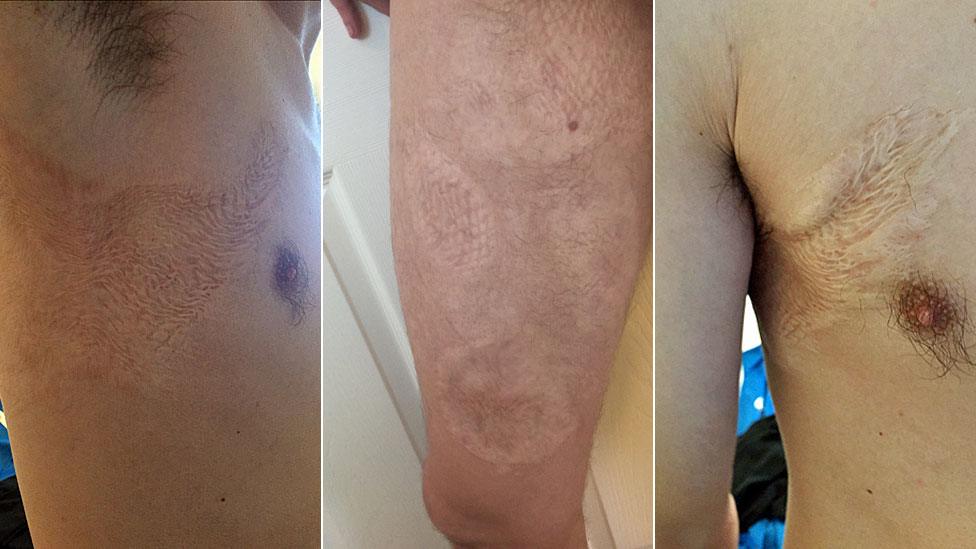
Tom had to have 14 skin grafts
After hospital, trying to get back to a normal life was really tough. I'd had three months off, so I was behind at school when I came out.
I tried to mix in with my friends again, but no one really wanted to hang around with me. They didn't know how to react.
It was start of Year 10, when you do GCSE coursework, so an important year. I was put in a room on my own because I was behind and then sent to a pupil referral unit, which is for kids who get kicked out of school, it's sort of the last place they can go.
I wasn't kicked out, I was just so far behind but it wasn't the right place for me. I got called names. I used to get called "KFC" for Kentucky Fried Crosby.
That's when things started going downhill, I stopped hanging out with my old friends and got in with a bad crowd and started getting into trouble.
Smoking marijuana, underage drinking, getting into trouble with the police - I was rebelling against everything. I felt like I shouldn't be alive, so I might as well do what I want.

The danger of railway trespassing

There have been over 2,700 reports of trespass by young people on Britain's rail tracks since the beginning of 2015, Network Rail told BBC 5 live Breakfast
These incidents include those aged 20 or under putting their lives at risk by playing "chicken", spraying graffiti, or train "surfing" - jumping on to a moving train
Over the past year rail trespass has led to 22 accidental deaths
Network Rail has launched a national safety programme, external that teaches school children how to be safe around the tracks using sport

But instead, I should have been thinking that I was lucky to be here and really try to make something of myself.
I got my education, but just basic GCSE exams - maths, English and science - they weren't the best in the world, but to my mum they were like going to university because I was never expected to finish coursework or to even sit exams.
From there I was in and out of jobs, often because I couldn't concentrate, I just couldn't settle on one thing. That's my biggest regret and now 14 years on I'm finally trying to find a career path.
I have had a particularly tough time over the past seven years. One of my brothers took his own life in 2009, then another brother, Shaun, died after falling down a flight of stairs when he was drunk. Then two years ago my dad passed away.
Last year was a really bad year, I'd started drinking more and getting into trouble. I wouldn't go out to drink and socialise, I'd drink to black out. I wouldn't know what I'd done or how I'd got home.
In May this year it finally came to breaking point and I had a bit of a breakdown. I thought everyone who I love leaves me.

Staying safe on railway tracks
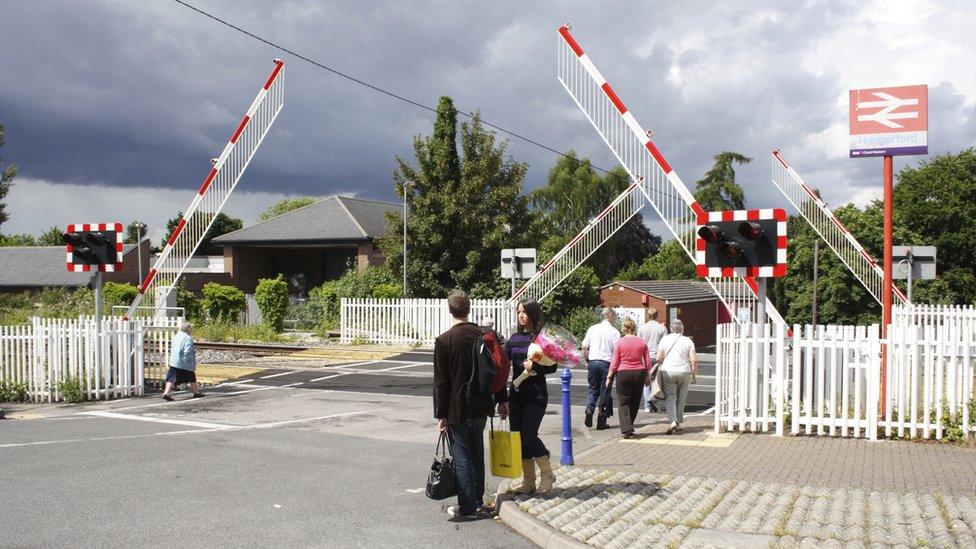
The only safe way to cross the railway tracks is in a place that is designed for crossing - either a bridge, subway, or railway (level) crossing
Most crossings have a sign and lights or bells that alert you if a train is coming. Many will also have gates that close when a train is coming. If this happens wait until the train has passed
When crossing tracks at a railway crossing, you should: Stop and look both ways before crossing, listen for the train coming and for warning bells, if there are lights watch for them to flash
Stand well back from the tracks if a train is going by
Never try to cross the tracks if a train is coming. It can take up to one and a half miles for a train to come to a complete stop
Always make sure there are no other trains coming before crossing
Source: Track Off, external

I was out of control, I'd been drinking for a week straight and my body was shutting down on me, that's when I got taken into hospital.
It was then, once I was back home that I woke up one morning and just thought I need to change my life.
About a week later, I was sat with a friend I'd known since I was a child and she said to come around and watch a film and have a Chinese. I went on the internet with her, because I thought maybe I could do something with my experience.
I typed in Network Rail safety and it said to email if you have any enquiries. A week later, I got an email from Nick Jordan, their Community Safety Manager. We ended up meeting and I was so impressed with the work he was doing to try and make the railways safe. He's become a friend and helps push me in the right direction.
Since January this year I've been trying to make a positive out of a negative - trying to get involved with Network Rail, just trying to get the point across of how dangerous the railways are for kids, for anyone really.
I've been left with nerve damage and visible scars from skin grafts that I'll have for life. I have no memory of what happened, but flashbacks can be triggered at any point.
I've been telling my story to children and adults across the country to try and warn people not to trespass on the rail tracks, because it can completely change your life or even end your life.
If I was to tell my 14-year-old self something - I'd say the rail tracks aren't a playground, why play on a railway? It's somewhere that can kill you and that's something no one's family should have to go through.
Listen to Tom and Siobhan's experiences on BBC 5 live Breakfast on Thursday, 3 December from 06:00 GMT or listen again on iPlayer
Subscribe to the BBC News Magazine's email newsletter to get articles sent to your inbox.